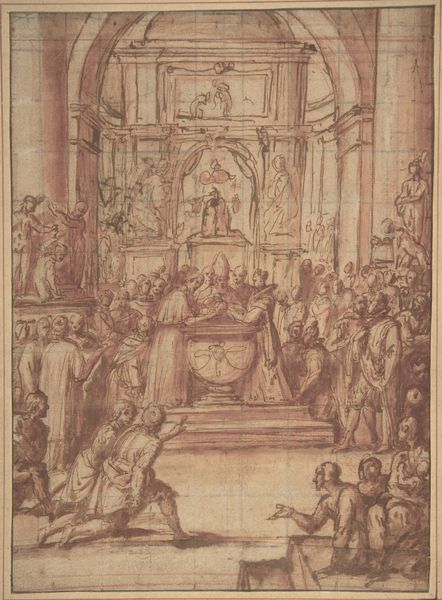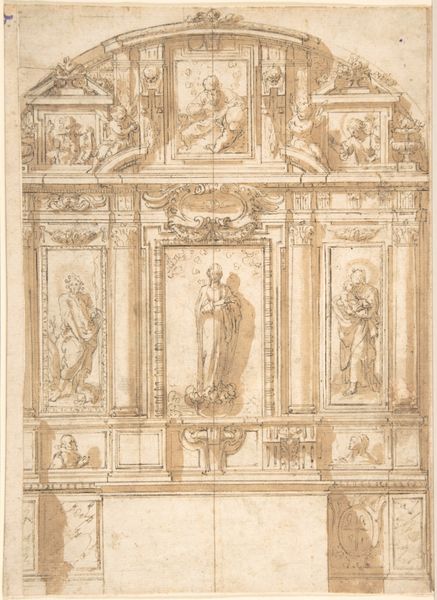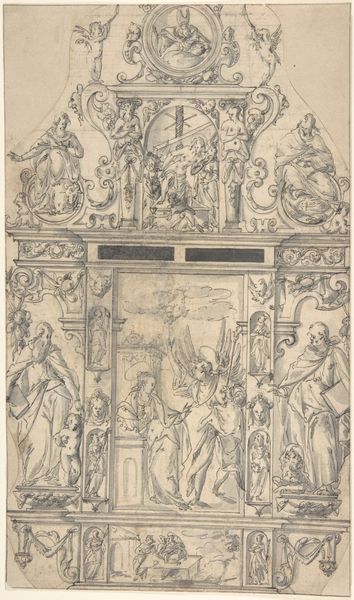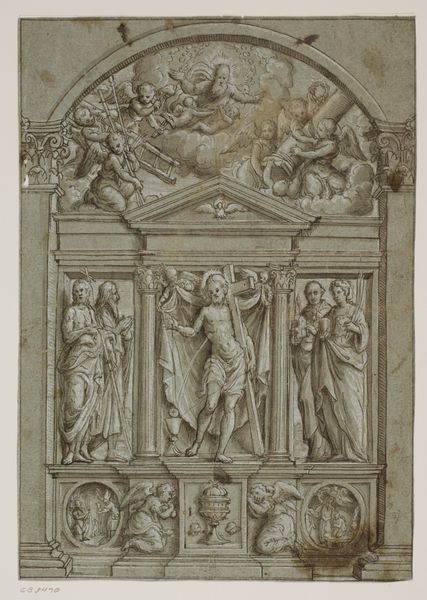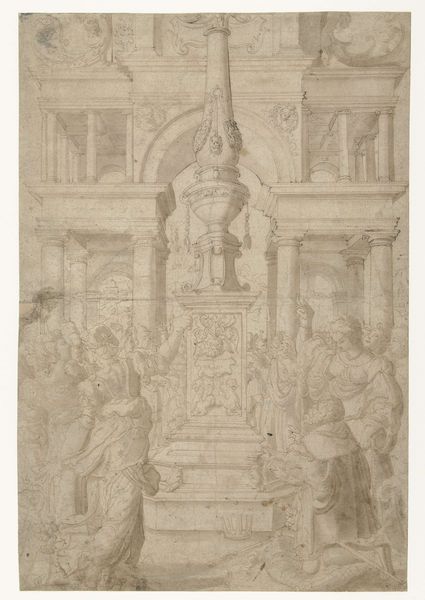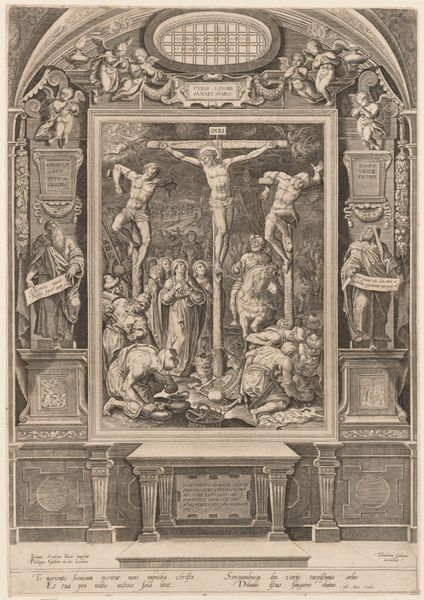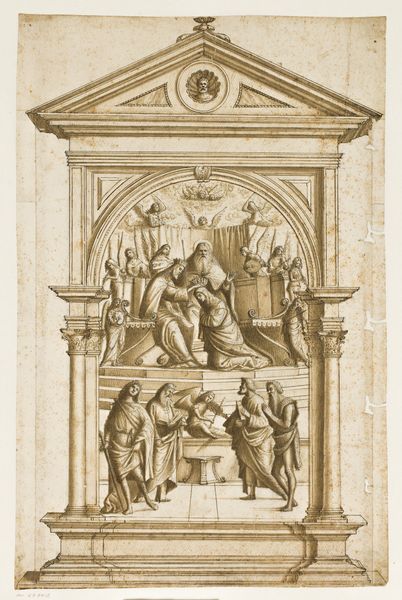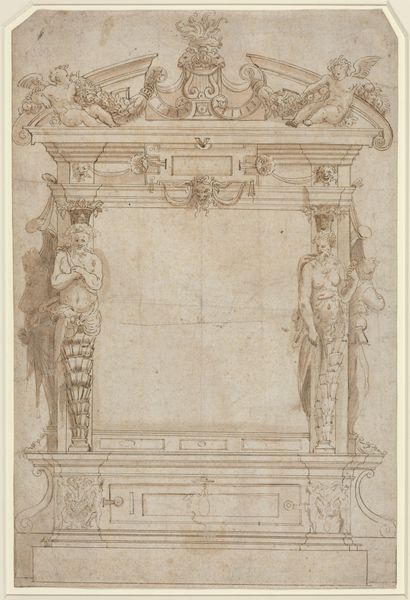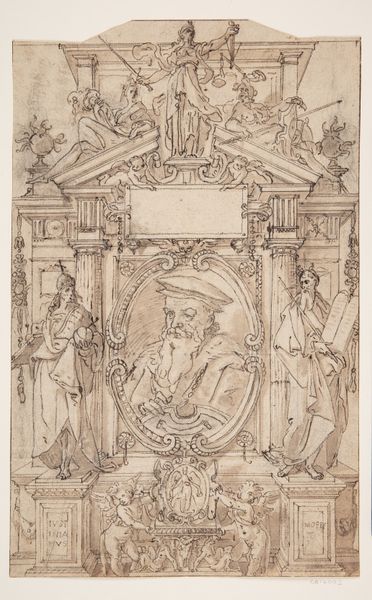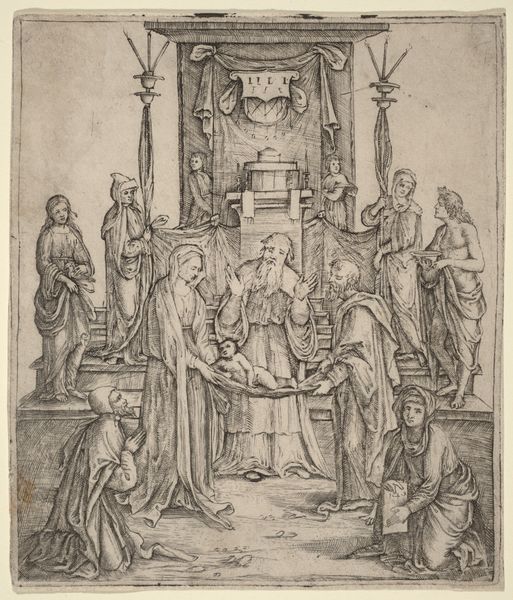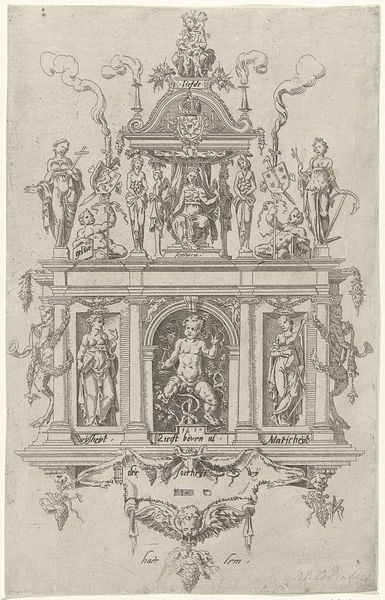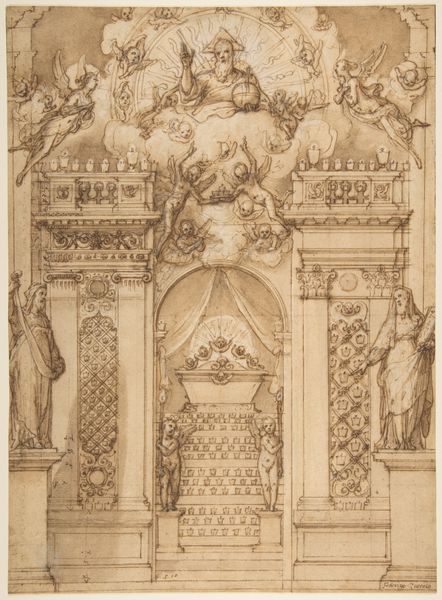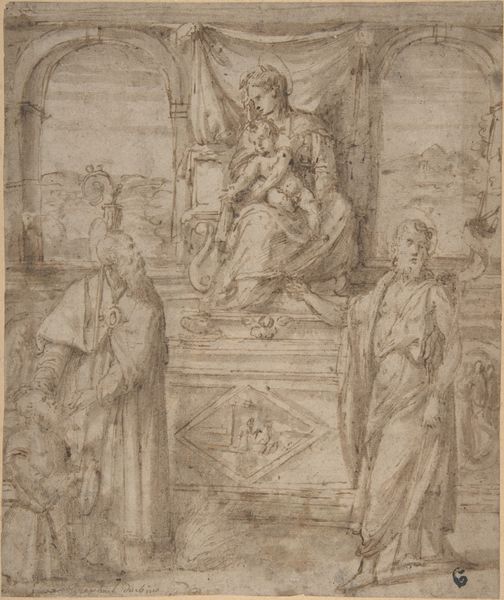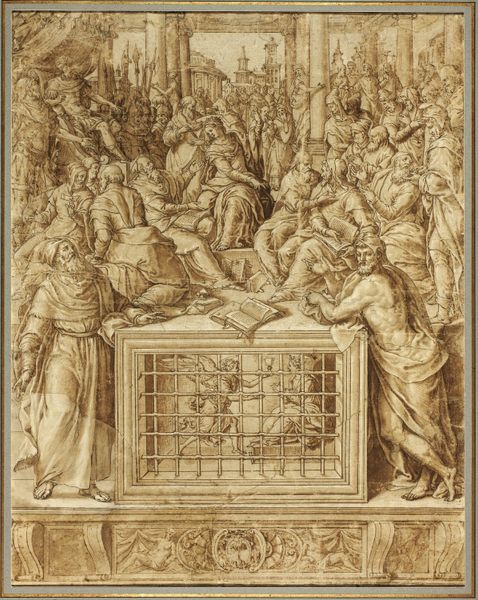
drawing, print, ink
#
drawing
#
ink painting
# print
#
11_renaissance
#
ink
#
coloured pencil
Dimensions: overall: 37 x 25.8 cm (14 9/16 x 10 3/16 in.)
Copyright: National Gallery of Art: CC0 1.0
Curator: Immediately striking is the intricacy; the image overall reads like an architect’s rendering. Editor: Exactly. This is Augustin Braun’s “Title Page for a Bible,” likely from the Renaissance, though the exact date is not known. Executed in ink and perhaps colored pencil, and it appears as a drawing intended for eventual print reproduction. Curator: The density is quite overwhelming. A lot happening for a title page. My eye keeps drifting across it, trying to discern the production steps: the underdrawing, the application of color, the precise linework. Editor: That density speaks to the role of religion during the Renaissance. This wasn’t simply an aesthetic object; it represented authority and offered a narrative—one reinforced by gendered and hierarchical social structures of the period. Curator: Well, consider how this drawing may have functioned within Braun’s workshop. Was this design entirely his, or was it the result of collaboration? How were these designs transferred onto the printing plate? Editor: I think it’s also key to ask what type of viewer this Bible design catered to. Were wealthy patrons or laypeople expected to engage with such imagery, and how did it reinforce existing power dynamics? Note the positioning of figures like Moses, representing law, and Peter, holding the keys, emblems of Papal authority. Curator: What strikes me is that the empty frame at its center feels incomplete, but I realize its blankness creates space for the text. This drawing serves, in a way, to facilitate textual exchange and further material understanding. Editor: Right, and the whole structure feels very stage-like, doesn't it? Figures flank an empty stage with elaborate costuming...almost demanding a social or political performativity of religion in its time. Curator: This brings it back to material practice for me: Braun’s skill and intent in this single drawing translated into manifold reproductions—impressive considering the processes of this era. Editor: Agreed, and its purpose likely transcended pure aesthetics, embedding it deeply within Renaissance intellectual, religious, and even political landscapes. The act of making the Word accessible inevitably held power. Curator: Considering Braun’s choices emphasizes not only artistic expression but also reveals the role of craft in disseminating Renaissance ideology. Editor: Precisely. I think thinking of it as just beautiful object limits our access to broader social implications, then and now.
Comments
No comments
Be the first to comment and join the conversation on the ultimate creative platform.
